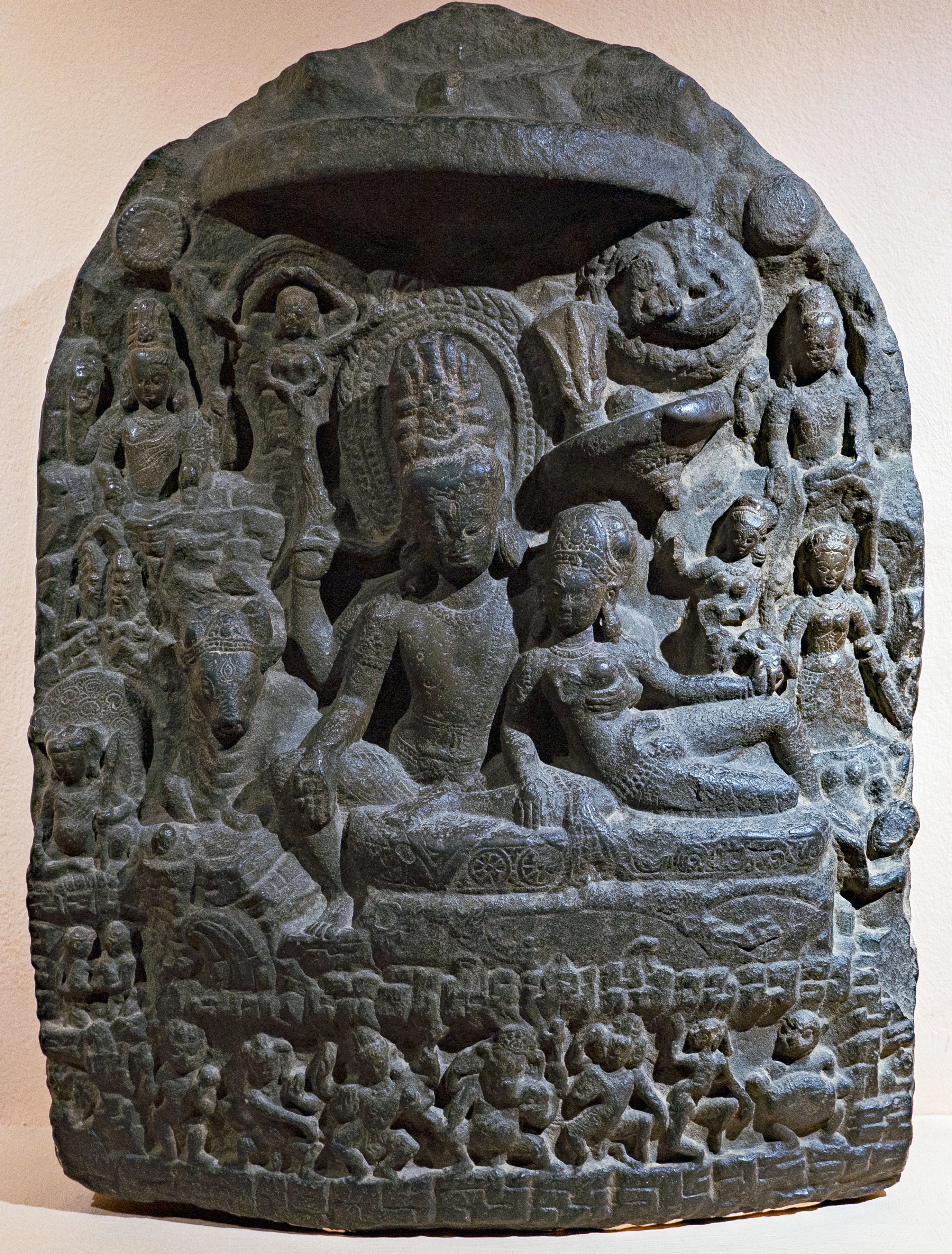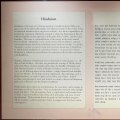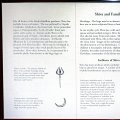Patan Museum (Nepal): photo 142
Photo 142 of 212 in Gallery: Patan Museum (Nepal)

Image title: Uma-Maheshvara (Nepal, 12th century)
Description of the photo
This Limestone sculpture shows an image of Uma-Maheshvara (The Divine family at home on Mounth Kailash/Kailasa), from the 12th century origination from Nepal.—Materials used: Grey Limestone.
The image of the divine couple, Uma-Mahesvara, has been one of the most popular themes among Nepalese stone sculptors for more than a thousand years. It depicts Shiva (Mahesvara) sharing his throne with Parvati (Uma), his spouse, in their abode on Mount Kailash [Kailasa] surrounded by family, attendants, and other deities.
In this example, Shiva is seated in the typical lalitasana pose, his left leg resting on the seat his right leg pendant. He gently caresses Uma with one of his hands. In his right, upper hand he holds a strand of his own locks onto which Ganga, the river goddess, pours water from her folded hands.
The bull Nandi, Shiva’s mount, peers between him and one of his sons, Kumara, who is holding a lance. Shiva’s other son, the elephant-headed Ganesha, leads a troupe of Ganas who make merry for pleasure of the divine couple above. The top of the relief is shaded by a huge parasol flanked by symbols of the sun and the moon.
Stolen gods of Nepal
This stone relief originally adorned a shrine in Dhulikhel, a town twenty-five kilometers east of Kathmandu. It was sold in 1985 by a German art dealer to the Museum fur Indische Kunst in Berlin for DM 100,000 after being stolen in 1982.
In 1989, the eminent artist and former Chancellor of the Royal Nepal Academy, Lain Singh Bangdel, published “Stolen Images of Nepal,” documenting in photographs the loss of some 120 religious stone sculptures over the last decades, unfortunate victims of the flourishing international art market. This sculpture was among 15 stolen examples of the popular Uma-Mahesvara image in the book In 2000, after Bangdel identified the lost image from a catalogue of the Berlin museum, the stolen sculpture was returned to Nepal. This was the first such official restitution from a museum abroad.
Gallery information:
The Patan Museum is located on the Durbar square of Patan (Lalitpur/Lalitapura, Kathmandu, Nepal) which is associated Keshav Narayan Chowk (Keshavnarayan)—a form of Lord Vishnu. Being listed as a World Heritage Site, the whole of Durbar square is filled with exquisite temples, sculptures and other ancient structures, of which the ancient history history can be traced to the Malla Kings of Lalitpur. It is an important site for both Buddhism and Hinduism.
Photo details:
Date: 2019-12-02
Camera: SONY ILCE-6400
Exposure: 1/25
Aperture: f/4.5
ISO: 100
Focal length: 18mm
High resolution:
Download file
Size: 5.80 MB
Resolution: 2752 x 3624
© Photograph by Gabe Hiemstra.
License: CC BY-NC-ND 4.0

